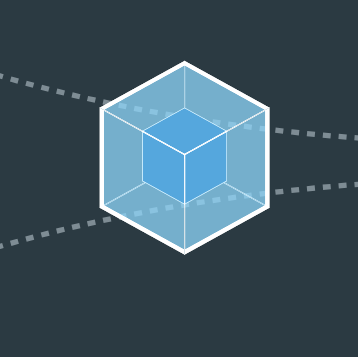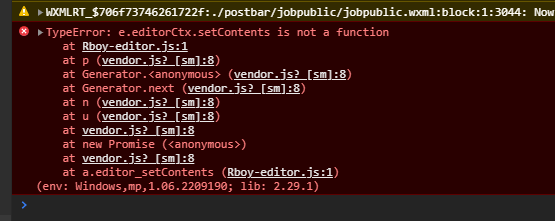在前端工程化中webpack的配置
首先我们要先看项目中有没有webpack.config.js这个文件,如果没有的话,我们需要在项目中新创建webpack.config.js这个文件,然后在里面进行配置
一、配置Mode
首先我们在新创建的webpack.config.js中先创建结构,进行配置
const config = {
}
module.exports = config在config中加入 mode: 'production';
mode有两种模式,development开发模式和production成品模式,使用时按照自己的需求配置。
代码如下
mode: 'production',
二、配置入口文件
entry配置入口文件,此配置将决定webpack打包时那个为入口文件,例如我的入口文件为src文件夹下index.js则,entry: './src/index.js'。
代码完成后如下
entry: './src/index.js',
三、输出文件配置
output配置,此处配置webpack文件打包后的输出路径以及文件名,需要设置底下path和filename两个属性
因为要获取路径,我们需要在项目中引用path模块,获取当前路径
const path = require('path')配置代码如下
output: {
path: path.resolve(__dirname, 'dist'),
filename: 'build.js'
},四、资源加载配置
在工程中,我们需要用到css、scss等文件,在这里我们只展示sass,scss,css,图片和字体的配置,
在使用前,需要先进行安装一些依赖
npm install style-loader css-loader sass-loader node-sass file-loader --save-dev
配置如下
module: {
rules: [
{ test: /\.(css|sass|scss)$/, use: ['style-loader','css-loader','sass-loader'] }, // 设置css、sass、scss资源加载
{ test: /\.(png|svg|jpg|gif)$/, use: ['file-loader'] }, // 设置png等图片资源的加载
{ test: /\.(woff|woff2|eot|ttf|otf)$/, use: ['file-loader'] } // 设置字体资源的加载
]
},五,配置插件
在这里我们使用 html-webpack-plugin 进行一个简单创建 HTML 文件,用于服务器访问的演示
首先我们先安装依赖
npm install html-webpack-plugin --save-dev
然后我们在plugins中应用该插件
new HtmlWebpackPlugin({
template: 'index.html', // 模块文件路径
filename: "index.html" // 生成文件名称
}),六、热模块的开发
在项目中我们每次手动打包太过麻烦,所以我们需要配置一下热模块,每次更改文件后让它自动完成打包
我们要先安装依赖
npm install webpack-dev-server --save-dev
引用依赖
const webpack = require('webpack');在配置中打开热更新,代码如下
devServer: {
hot: true,
}在plugins中引入该插件
new webpack.HotModuleReplacementPlugin()
这时我们用 webpack serve命令就能使用热更新
七、打包后自动删除多余文件
该功能需要借助 clean-webpack-plugin 插件来完成,它能够打包完成后自动删除没用的文件
先安装依赖
npm install clean-webpack-plugin --save-dev
引用依赖
var { CleanWebpackPlugin } = require('clean-webpack-plugin')在plugins中引用
new CleanWebpackPlugin()
八、将单个文件或整个目录复制到构建目录
使用copy-webpack-plugin插件可以将一个文件或者目录整个复制到构建目录中
先安装依赖
npm install copy-webpack-plugin --save-dev
引用依赖
const CopyPlugin = require('copy-webpack-plugin')在插件plugins中使用该功能
new CopyPlugin({
patterns: [
{ from: './assets', to: './assets' }, // from代表构建前的文件路径 to 代表构建后的文件名称及目录
],
}),到这里webpack差不多就配置完成了,值得一提的是,webpack4以后就支持es6语法了,所以不需要在单独配置es6的语法了
全部代码如下
const path = require('path')
var HtmlWebpackPlugin = require('html-webpack-plugin')
var { CleanWebpackPlugin } = require('clean-webpack-plugin')
const CopyPlugin = require('copy-webpack-plugin')
var webpack = require('webpack');
const config = {
mode: 'production',
entry: './src/index.js',
output: {
path: path.resolve(__dirname, 'dist'),
filename: 'build.js'
},
module: {
rules: [
{ test: /\.(css|sass|scss)$/, use: ['style-loader','css-loader','sass-loader'] },
{ test: /\.(png|svg|jpg|gif)$/, use: ['file-loader'] },
{ test: /\.(woff|woff2|eot|ttf|otf)$/, use: ['file-loader'] }
]
},
plugins: [
new HtmlWebpackPlugin({
template: 'index.html',
filename: "index.html"
}),
new webpack.HotModuleReplacementPlugin(),
new CleanWebpackPlugin(),
new CopyPlugin({
patterns: [
{ from: './assets', to: './assets' },
],
}),
],
devServer: {
hot: true,
}
}
module.exports = config
 上一篇
上一篇





